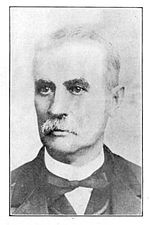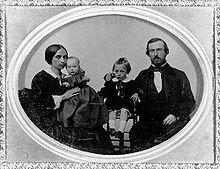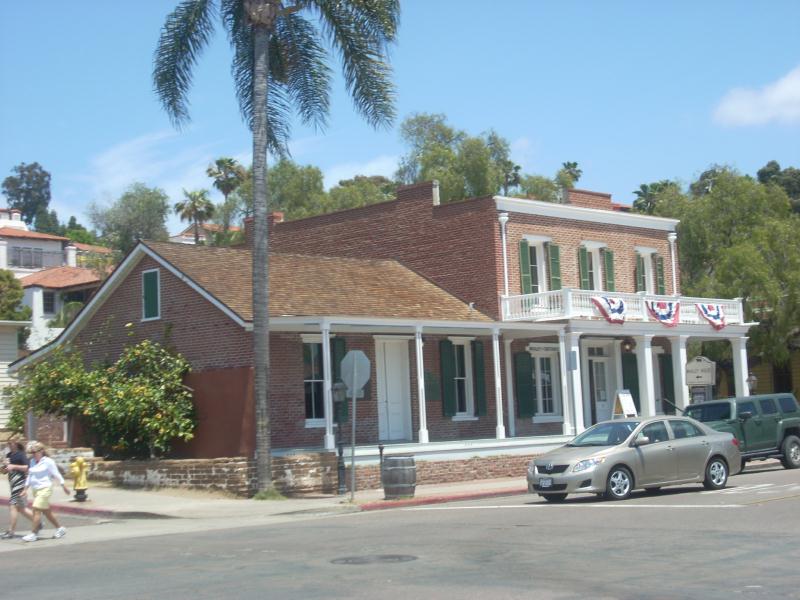San Jose Ghost Hunters
Whaley-Housext.
Investigation Report
Location: Whaley-House
Date: 04/30/13
Weather Conditions: warm
Humidity:
Temperature: 81*
Number of Photos taken: 20
Number with possible targets: 8
Olfactory Phenomena: None
Visual Phenomena: None
Type of Investigation: Photos EVP, EMF.1.0
Location Description and History
Whaley House Ghost Haunt tour spirit poltergeist:
There are some human beings who are dimly aware of their own deaths, yet have chosen to stay on in what used to be their homes, to be close to surroundings they once held dear. --Hans Holzer
Few houses in San Diego are as historically important as the Whaley House. In addition to being the Whaley Family home, it housed a granary, the County Court House, San Diego\'s first commercial theater, various businesses including Thomas Whaley\'s own general store, a ballroom, a billiard hall, school, and polling place. Significant events, such as the siezure of the court documents and records in 1871, and the suicide of Violet Whaley in 1885 profoundly affected Thomas and Anna Whaley. These events, as well as the hangings which occurred on the property before the house was constructed, have suffused the Whaley House with an air of mystery and added to its reputation as something more than just California State Historic Landmark #65.
According to the Travel Channel\'s America\'s Most Haunted, the house is the number one most haunted house in the United States. The alleged hauntings of the Whaley House have been reported on numerous other television programs and been written up in countless publications and books since the house first opened as a museum in 1960. Although we cannot state positively that the Whaley House is really haunted, the voluminous documentation of paranormal occurances at the site makes a compelling case. But, if there are ghosts at the Whaley House, who are they and why are they here?
The earliest documented ghost at the Whaley House is \"Yankee Jim.\" James (aka Santiago) Robinson was convicted of attempted grand larceny in San Diego in 1852, and hanged on a gallows off the back of a wagon on the site where the house now stands. The local newspaper reported that he \"kept his feet in the wagon as long as possible, but was finally pulled off. He swung back and forth like a pendulum until he strangled to death.\" Although Thomas Whaley had been a spectator at the execution, he did not let it disuade him from buying the property a few years later and building a home for his family there. According to the San Diego Union, \"soon after the couple and their children moved in, heavy footsteps were heard moving about the house. Whaley described them as sounding as though they were made by the boots of a large man. Finally he came to the conclusion that these unexplained footfalls were made by Yankee Jim Robinson.\" Another source states that Lillian Whaley, the Whaleys\' youngest daughter who lived in the house until 1953, \"had been convinced the ghost of \"Yankee Jim\" haunted the Old House.\" A visitor to the museum in 1962 mentioned that \"the ghost had driven her family from their visit there more than 60 years [earlier], her mother was unnerved by the phantom walking noise and the strange way the windows unlatched and flew up.\"
Many visitors to the house have reported encountering Thomas Whaley himself. The late June Reading, former curator of the museum, said, \"We had a little girl perhaps 5 or 6 years old who waved to a man she said was standing in the parlor. We couldn\'t see him. But often children\'s sensitivity is greater than an adult\'s.\" However, many adults have reported seeing the apparition of Mr. Whaley, usually on the upper landing. One said he was \"clad in frock coat and pantaloons, the face turned away from her, so she could not make it out. Suddenly it faded away.\"
The specter of Anna Whaley has also been reported, usually in the downstairs rooms or in the garden. In 1964, Mrs. Whaley\'s floating, drifting spirit appeared to [television personality Regis] Philbin. \"All of a sudden I noticed something on the wall,\" Philbin reported. \"There was something filmy white, it looked like an apparition of some kind, I got so excited I couldn\'t restrain myself! I flipped on the [flash]light and nothing was there but a portrait of Anna Whaley, the long-dead mistress of the house.\"
Other visitors have described seeing or sensing the presence of a woman in the courtroom. \"I see a small figure of a woman,\" one visitor said, \"who has a swarthy complexion. She is wearing a long full skirt, reaching to the floor. The skirt appears to be a calico or gingham, small print. She has a kind of cap on her head, dark hair and eyes and she is wearing gold hoops in her pierced ears. She seems to stay in this room, lives here, I gather.\" None of the Whaleys fit this description, but the house was rented out to numerous tenants over the years. Perhaps the mysterious woman in the courtroom was one of these.
Another presence reported by visitors and docents is that of a young girl, who is usually found in the dining room. Psychic Sybil Leek encountered this spirit during a visit in the 1960s. \"It was a long-haired girl,\" Sybil said. \"She was very quick, you know, in a longish dress. She went to the table in this room and I went to the chair.\" Urban legend has it that this is the ghost of a playmate of the Whaley children who accidentally broke her neck on a low-hanging clothesline in the backyard, and whose name was either Annabel or Carrie Washburn. There are no historic records of any child dying this way at the Whaley House; nor is there record of any family named Washburn residing in San Diego at the time. It is believed that the legend was started by a one-time employee of the Whaley House, in an effort to add to the house\'s mystique.
Even animals aren\'t left out of the singular occurances. A parapsychologist reported he saw a spotted dog, like a fox terrier, that ran down the hall with his ears flapping and into the dining room. The dog, he said, was an apparition. When they lived in the house, the Whaley\'s owned a terrier named Dolly Varden.
The Whaley House stands silently watching over San Diego Avenue as it has done for a century and a half. Every day visitors come from around the world to tour the historic museum. It contains so much history within its walls, that even the non-believer will enjoy the tour. For believers and sceptics alike, the house draws them back time and again, in search of those elusive ghosts. As Regis Philbin once said, \"You know a lot of people pooh-pooh it because they can\'t see it. But there was something going on in that house.\"
Location: 2476 San Diego Ave.
Old Town Village, Old Town San Diego, CA (map)
Phone: (619) 297-7511
More info: : Website
The Whaley House is a museum and historic landmark located in Old Town San Diego. While it is considered one of the most famous haunted houses in the country, the Whaley House also has an important place in San Diego history.
The Whaley House was built in 1857 by Thomas Whaley, a successful New York business man. He built the house using bricks he made in his own backyard. Whaley was so proud of his house that he proclaimed, “my new house, when completed, will be the handsomest, most comfortable and convenient place in town or within 150 miles of here.”
The Whaley House is an 1857 Greek Revival style residence, a California Historical Landmark,[2] and museum located in Old Town, San Diego, California. It is currently maintained by Save Our Heritage Organisation (SOHO).
The Whaley House was the home of Thomas Whaley and his family. At various times it also housed Whaley's general store, San Diego's second county courthouse, and the first commercial theater in San Diego.[3] The house has "witnessed more history than any other building in the city".[4]
On January 5, 1882, Violet Eloise Whaley and Anna Amelia Whaley married in Old San Diego. Violet married George T. Bertolacci and Anna Amelia wed her first cousin John T. Whaley, son of Henry Hurst Whaley. Two weeks into Violet's marriage, as the couple was traveling back east on their honeymoon, she awoke one morning to find her husband gone. Bertolacci, as it turned out, was a con artist, and as Violet and her family later learned, had only married her for the substantial dowry he believed he would collect, upon the marriage. Due to the restrictive morals and societal standards of the time period, Violet was essentially shunned by polite society upon returning home, not only without her husband, but also unchaperoned, something proper ladies simply did not do in late 19th century Victorian society. Violet and George's divorce was finalized approximately a year later, but Violet never recovered from the public humiliation and betrayal and suffered from depression.[3] Violet committed suicide by shooting herself in the chest with Thomas's 32-calibre on August 18, 1885.[3] She was then 22 years of age. Her suicide note reads thus:
Corrine Lillian was engaged at the time of her sister's death, but her fiancé broke off the engagement due to the scandal it raised. After these tragic events, Thomas Whaley built a single-story frame home for his family at 933 State Street in Downtown San Diego and the family moved into the new residence, leaving the Whaley House vacant for over two decades.[3]
After all this family history of success and deaths the Whaley House remains well known as a haunted house. It is said that guests and the staff, from time to time, will catch a glimpse of the ghost of a Whaley family member who died inside the house such as: baby Thomas Jr., Violet, Anna, Francis, George and Corinne Lillian Whaley.[6]
The Whaley House is located in the Old Town neighborhood of San Diego, California. The historic house opened as a museum on May 25, 1960, managed by the Save Our Heritage Organization. Since 2007 a live-in caretaker has lived on the property to prevent theft and vandalism. The two-story Greek Revival house was designed by Thomas Whaley himself and built in 1857. The cost of the house was more than $10,000.[4] It was made from bricks created in Whaley's own brickyard on Conde Street. The house was the first of its kind in San Diego. "My new house, when completed, will be the handsomest, most comfortable and convenient place in town or within 150 miles of here."
—Thomas Whaley, San Diego Coast Life[8]
Whaley's new house was known as the finest in Southern California. The house was furnished with mahogany and rosewood furniture, Brussels carpets, and damask drapes and was considered a mansion for its time and place. The residence became the gathering place for San Diego. Besides being the Whaley family home, it was also San Diego's first commercial theater, the county courthouse, and a general store. In October 1868, an upstairs family bedroom was converted into a theater after Thomas Whaley rented the room out to the Tanner Troupe, a local theatre troupe traveling through San Diego at the time. For the troupe's opening night performance, the small room accommodated a stage, a few benches, and an astonishing 150 guests, although it was mostly standing room only and ladies had been advised not to wear their hoop skirts or petticoats that evening to allow for more room. The operator of the theater, Thomas Tanner, died just 17 days after opening, and his troupe had disbanded by the end of January, 1869. The Whaley House also served as the county courthouse in 1869. For 65 dollars a month, the county of San Diego leased the courtroom and three of the upstairs bedrooms. Another part of the Whaley House history was the Whaley & Crosthwaite General Store which was a wholesale and retail store. In the 1860s and 1870s the house became the focal point of a battle between Old Town residents and residents of New Town (current downtown) for dominance of San Diego. The San Diego County government had been renting a portion of Whaley House for its offices and records. Whaley offered several times to sell the house to the county, but the offered was ignored. New Towners demanded that the county offices and records be moved to New Town. The issue dominated local elections, with Republicans favoring New Town while Democrats favored Old Town. There were conflicting court orders; at one point the local sheriff was ordered to seize Whaley House, but refused. A judge ordered the removal of three supervisors from the Board of Supervisors, and another judge tried to appoint three other men to the posts. After several years of court battles the California Supreme Court ordered the reinstatement of the three original supervisors, who ordered that the county records be moved to New Town. Despite threats of armed resistance from the Old Towners, the records were moved on March 31, 1871, effectively shifting the focus of the city to New Town.[4]
The Whaley House is located in the Old Town neighborhood of San Diego, California. The historic house opened as a museum on May 25, 1960, managed by the Save Our Heritage Organization. Since 2007 a live-in caretaker has lived on the property to prevent theft and vandalism. The two-story Greek Revival house was designed by Thomas Whaley himself and built in 1857. The cost of the house was more than $10,000.[4] It was made from bricks created in Whaley's own brickyard on Conde Street. The house was the first of its kind in San Diego.
"My new house, when completed, will be the handsomest, most comfortable and convenient place in town or within 150 miles of here."
—Thomas Whaley, San Diego Coast Life[8]
Whaley's new house was known as the finest in Southern California. The house was furnished with mahogany and rosewood furniture, Brussels carpets, and damask drapes and was considered a mansion for its time and place. The residence became the gathering place for San Diego. Besides being the Whaley family home, it was also San Diego's first commercial theater, the county courthouse, and a general store.
In October 1868, an upstairs family bedroom was converted into a theater after Thomas Whaley rented the room out to the Tanner Troupe, a local theatre troupe traveling through San Diego at the time. For the troupe's opening night performance, the small room accommodated a stage, a few benches, and an astonishing 150 guests, although it was mostly standing room only and ladies had been advised not to wear their hoop skirts or petticoats that evening to allow for more room. The operator of the theater, Thomas Tanner, died just 17 days after opening, and his troupe had disbanded by the end of January, 1869. The Whaley House also served as the county courthouse in 1869. For 65 dollars a month, the county of San Diego leased the courtroom and three of the upstairs bedrooms. Another part of the Whaley House history was the Whaley & Crosthwaite General Store which was a wholesale and retail store.[3]
In the 1860s and 1870s the house became the focal point of a battle between Old Town residents and residents of New Town (current downtown) for dominance of San Diego. The San Diego County government had been renting a portion of Whaley House for its offices and records. Whaley offered several times to sell the house to the county, but the offered was ignored. New Towners demanded that the county offices and records be moved to New Town. The issue dominated local elections, with Republicans favoring New Town while Democrats favored Old Town. There were conflicting court orders; at one point the local sheriff was ordered to seize Whaley House, but refused. A judge ordered the removal of three supervisors from the Board of Supervisors, and another judge tried to appoint three other men to the posts. After several years of court battles the California Supreme Court ordered the reinstatement of the three original supervisors, who ordered that the county records be moved to New Town. Despite threats of armed resistance from the Old Towners, the records were moved on March 31, 1871, effectively shifting the focus of the city to New Town.[4]
Francis Whaley married Susan E. Murray in Mendocino, California on December 31, 1888. On December 14, 1890, Thomas Whaley died due to ill health at the State Street address. Anna Amelia Whaley died at Modesto, California on December 12, 1905.[3]
Meanwhile, the old Whaley House remained vacant and fell into disrepair. In late 1909 Francis Whaley undertook the restoration of the building and turned the home into a tourist attraction, where he posted signs promoting its historicity and entertained visitors with his guitar. Anna Whaley, Thomas's widow, Corinne Lillian, Francis and George all lived in the old Whaley House in 1912. On February 24, 1913 Anna died at eighty years of age. A year later, Francis Whaley died on November 19, 1914. George Whaley died on January 5, 1928 in San Diego and, Corinne Lillian Whaley continued residency in the house until her death in 1953.
Reported Phenomena
Photographs
 | ||||
 | ||||


